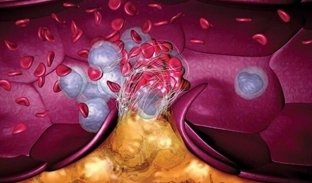Modern methods of surgical correction of the face and body in aesthetic medicine are constantly being improved, and today plastic surgery allows you to correct almost any figure or face flaw. However, experts note that complex and rather aggressive interventions are often used to achieve a small aesthetic effect, requiring highly qualified surgeons. In addition, complex plastic surgery is fraught with serious complications, especially in older patients. So, for example, when asked how to get rid of fat, the patient should be told about the risks of fat embolism and other complications, which can be found on estet-portal.com.
The most dangerous complications after liposuction: why they happen
To achieve the maximum effect in body shaping, which the patient dreams of, aesthetic surgery uses quite serious, volumetric interventions. At the same time, the patient is not always informed about possible unpleasant consequences, and doctors have little experience in dealing with complications after plastic surgery. Fat removal operations, like other surgical interventions, require careful preoperative preparation and qualified patient management in the postoperative period. Thus, a fat embolism, which can develop after removal of unwanted fat deposits in a patient, has a very high risk of death if it is not recognized in time and adequate measures are not taken.
Esthetists should be aware that many patients seeking to correct their appearance through plastic surgery are already elderly and have a history of cardiovascular disease.
When correcting the figure, the following factors that increase the load on the heart and blood vessels should be taken into account:
- significant blood loss and disorders of the coagulation system,
- use of compression corsets and elastic bandages in the postoperative period,
- risk of thrombosis due to prolonged immobilization after surgery,
- long-term anesthesia, therapy with painkillers and anti-inflammatory drugs.
One of the most dangerous complications after surgery to remove excess body fat is fat embolism. Patients interested in how to get rid of fat by surgery should be warned that this complication can be recognized in time in about 1-2% of cases, and the lethality of this complication, despite the most modern methods of treatment, remains extremely high. Physicians should have a clear understanding of the manifestations of fat embolism after liposuction and be able to provide adequate care to patients.
How to get rid of fat: why and how fat embolism develops
The impetus for the development of fat embolism is a sharp violation of fat metabolism, when, as a result of liposuction, particles of fat enter the microvasculature of tissues. In this case, thrombus formation in the capillaries and the development of endointoxication by products of lipid metabolism are possible. The entry of fat microparticles into the bloodstream causes the activation of coagulation factors and the formation of thrombin clots. Possible inhibition of the tone of the sympathetic nerves, which is manifested by a sharp decrease in blood pressure. It should be noted that about 80% of fatty microparticles are retained in the tissues of the lungs, damaging cell membranes.

The course of a fat embolism after liposuction can be different - from a lightning death of a patient to the development of a serious condition within three days.
The typical symptoms suggestive of a fat embolism are small hemorrhages and a petechial rash on the inner surfaces of the arms, on the chest and back, on the sclera and mucous membranes of the eyes. Further, respiratory failure develops, which may be accompanied by convulsions, loss of consciousness, and very high fever. Another early sign of a fat embolism is a persistent unmotivated tachycardia in a patient.
How to get rid of fat without consequences: help with fat embolism
For those who are wondering how to get rid of fat without serious consequences, there is good news: with adequate and timely treatment of fat embolism, even the most severe neurological symptoms regress.
In the treatment of fat embolism that developed after liposuction or abdominoplasty, heparin therapy is used, protease inhibitors, and antioxidants are used. Lipostabil, Essentiale, glucose solution with ethyl alcohol help to restore the physiological dissolution of fatty microparticles in the blood. Detoxification therapy is indicated - forced diuresis, plasmapheresis.






Add a comment